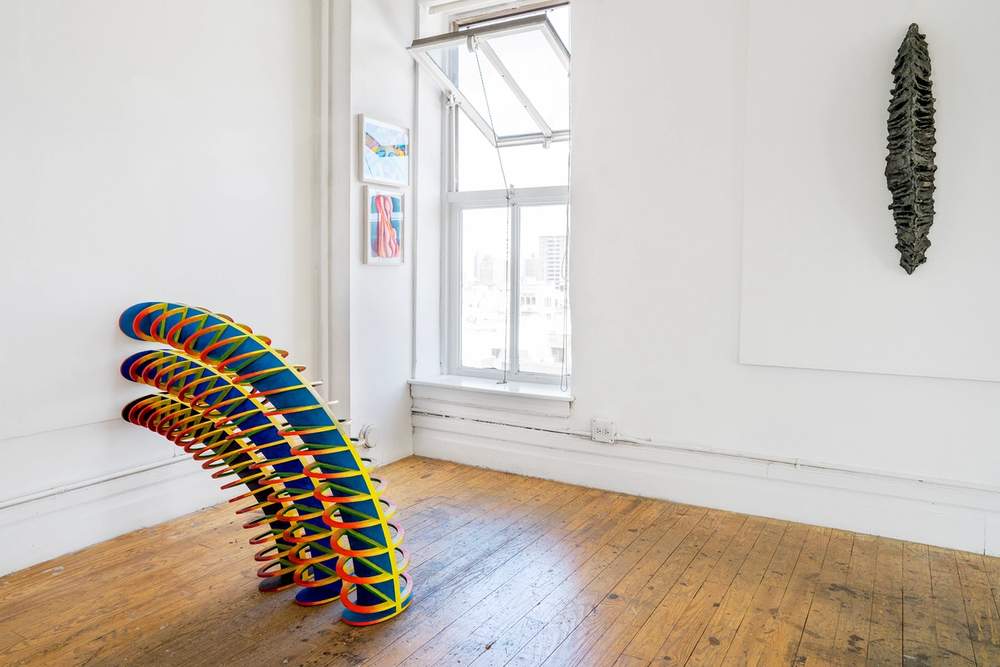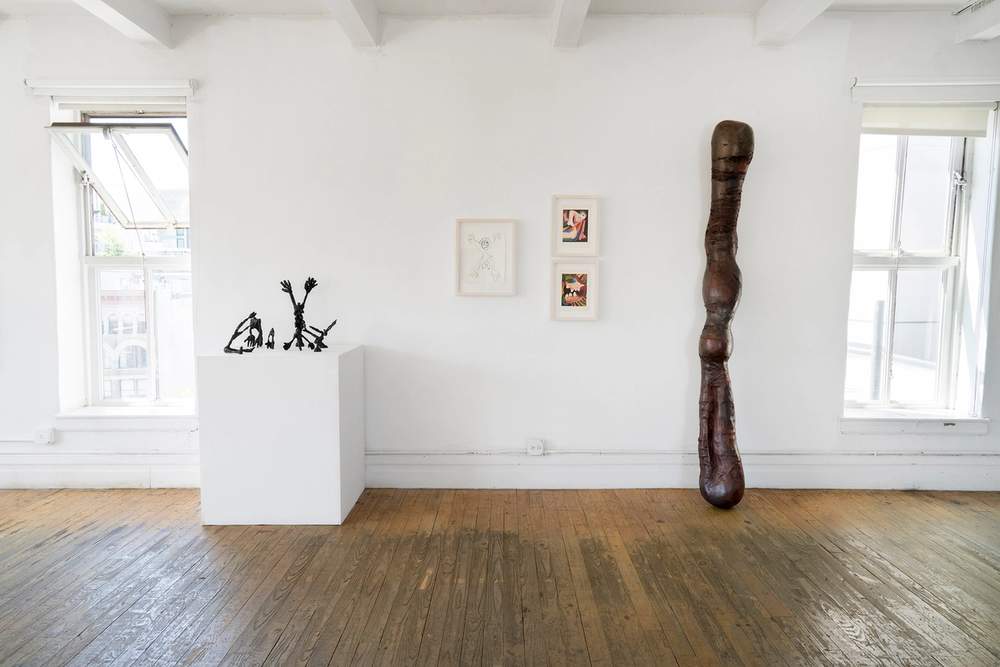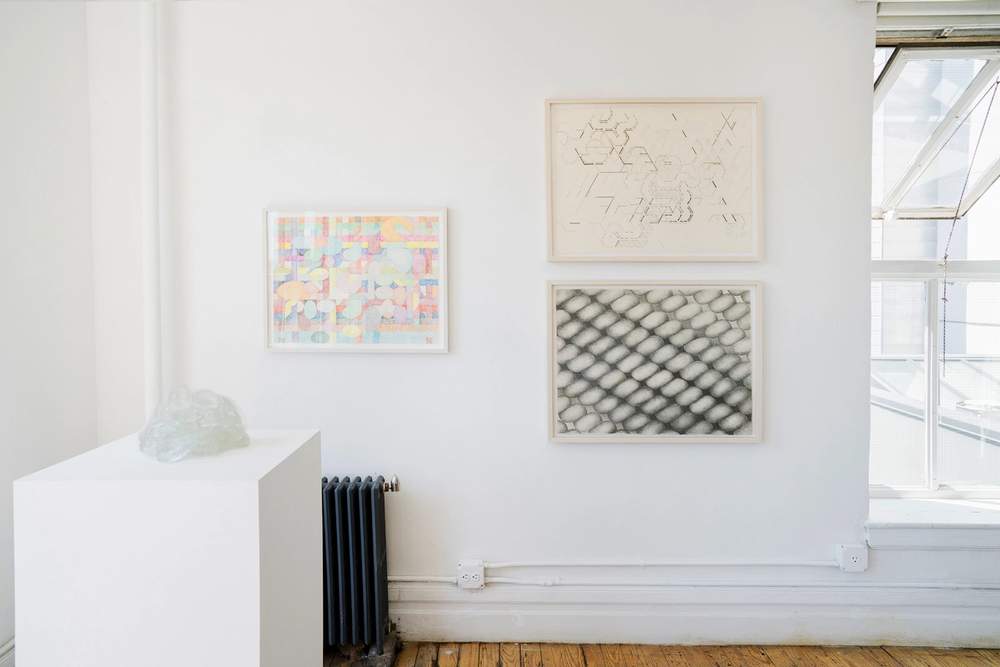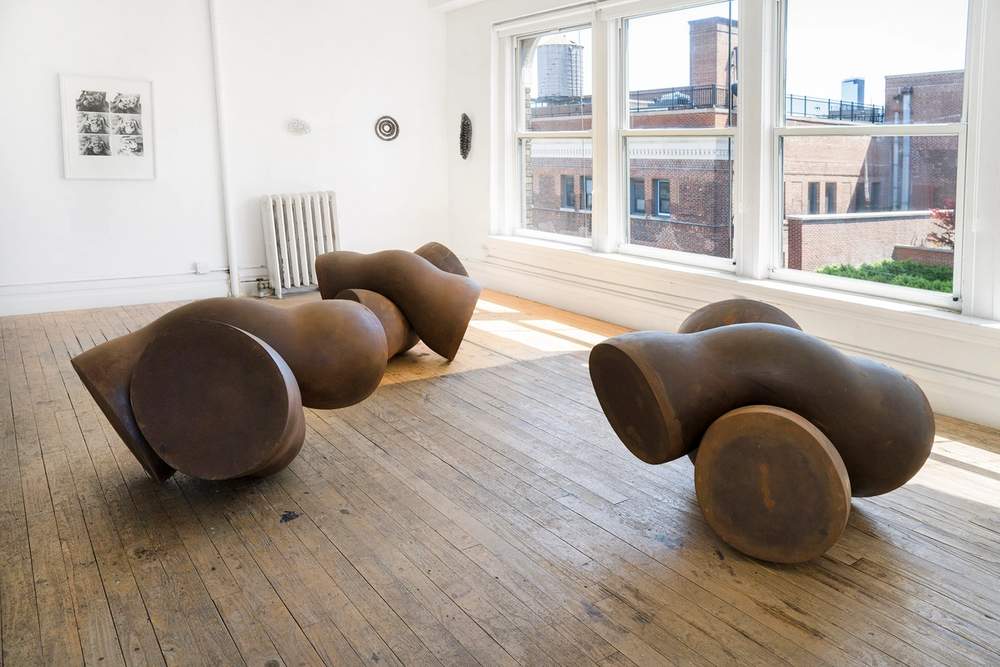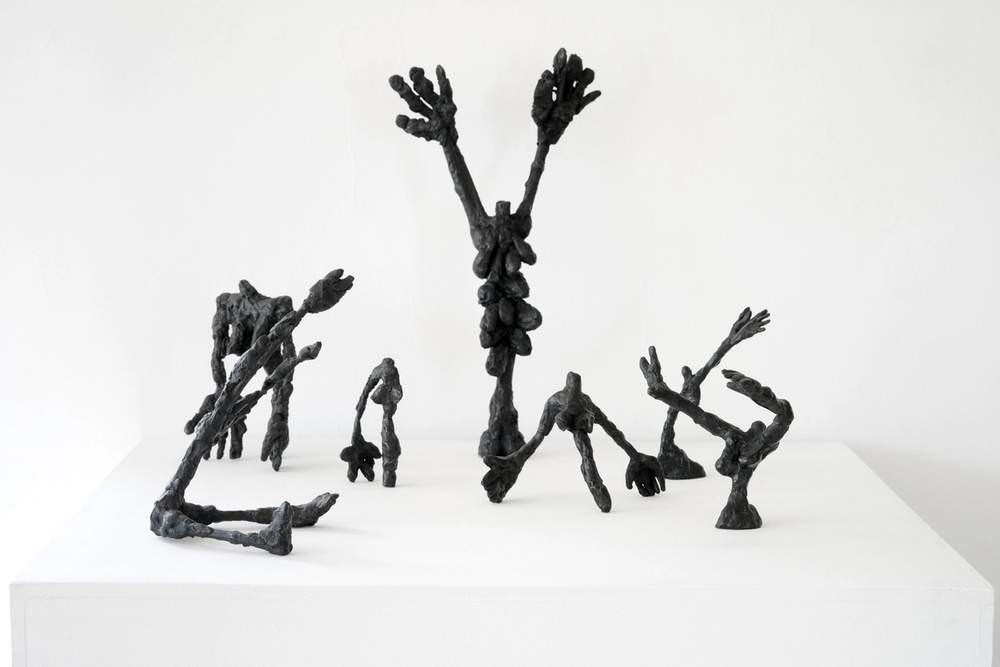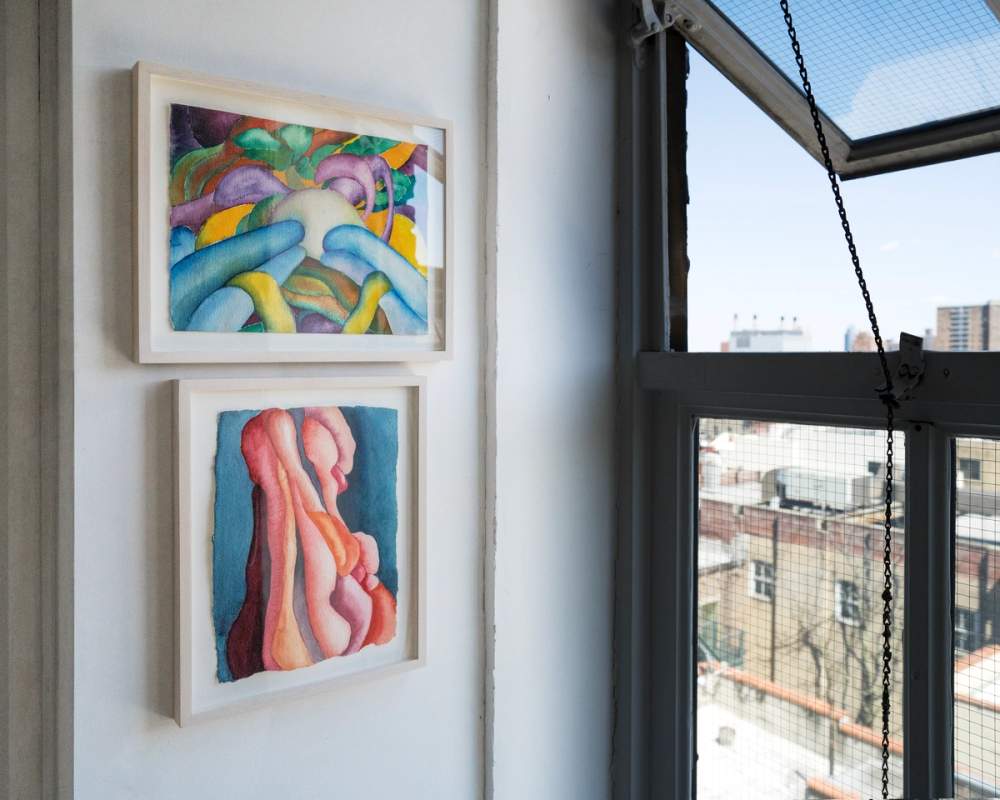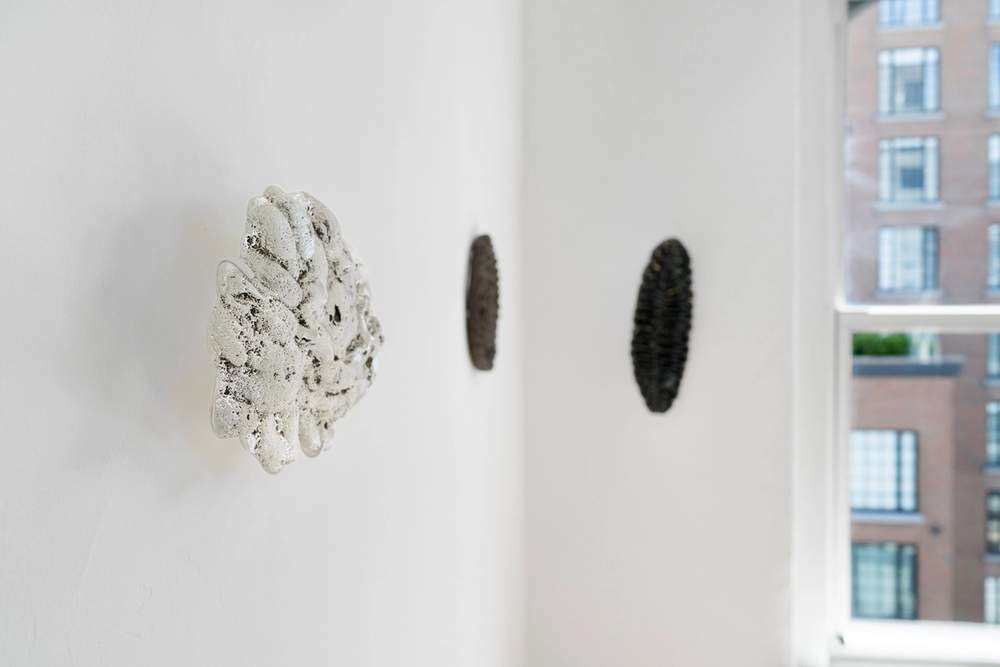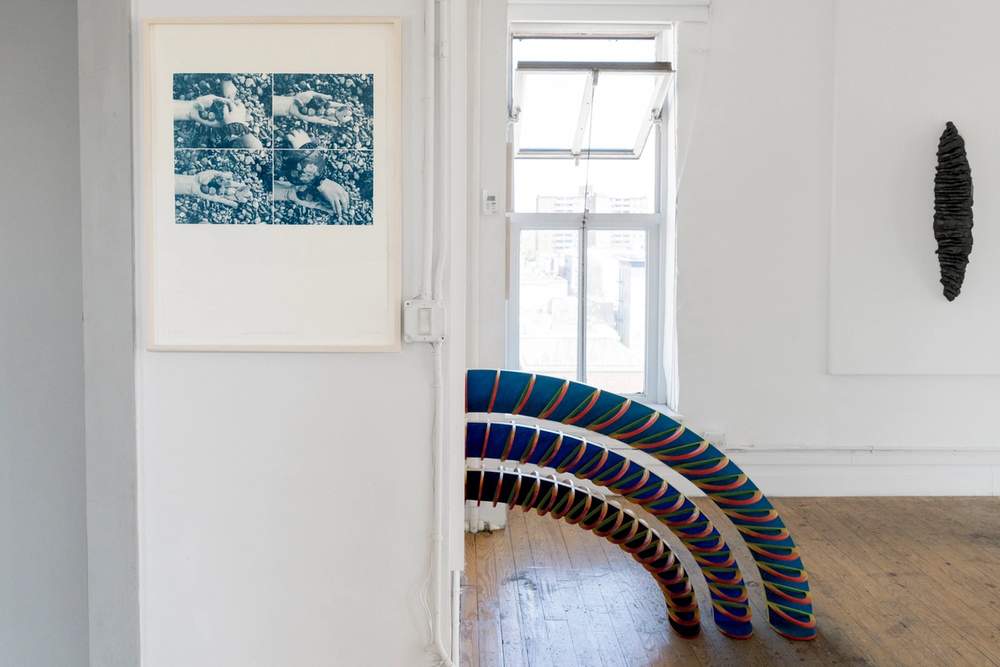- Exhibition Title
- Eve Biddle | Mary Ann Unger: Generation
- Show Type
- Group
- Curator
- Ylinka Barotto
- Venue
- Mary Ann Unger Estate
- Year
- 2023
- Location
- New York, NY
Press Release
The Mary Ann Unger Estate is delighted to announce an encore presentation of Eve Biddle / Mary Ann Unger: Generation in a domestic, site-specific format in the artists’ former loft at 5 East Third Street on view from May 17 to August 15, 2023. A wide ranging, varied, and decades spanning installation of sculpture, drawings, photographs, and prints made by daughter and mother explores a myriad of shared tendencies, vocabularies, and influences. Recently on view at Davidson Gallery and curated again by Ylinka Barotto, the exhibition includes affecting examples of Unger’s sculptures from the 1970s and 90s, as well as rarely seen drawings, and a recent and ongoing suite by Biddle of high gloss ceramic sculptures. Installed in what was Unger’s studio and Biddle’s childhood home—and where Biddle herself would later work as a young artist—the exhibition includes special opportunities for the public to explore rarely seen letters, journals, and ephemera drawn from the Estate’s flat files.
The nearly 2,000 square foot loft off the Bowery was a home and workspace for Unger, her husband and photographer Geoffrey Biddle, and daughter Eve. Unger discovered the former factory warehouse in 1975 and her tenacity and ingenuity allowed it to eventually function as home, nursery, studio, and darkroom for her and her family. “More factory than residence,” confesses Geoffrey Biddle in a forthcoming memoir, Rock in a Landslide (Working Assumptions, 2023), the loft also served as a place for gatherings and viewings, especially for fellow female artists. American art curator and Unger authority Horace Ballard writes in his revelatory Mary Ann Unger: To Shape a Moon from Bone (Marquand Books, 2022) that “Unger believed deeply in making space for other female artists” and “often quickly turned the loft into a gallery space.” Today, the loft is preserved and maintained by the family and Estate, houses the artist’s archives, and presents exhibitions.
Ballard’s new scholarship has placed Unger (1945-1998) in her historical and cultural context, and he asserts that the artist who came of age in the 1970s downtown New York art scene is remembered not only for her monumental sculpture that explored issues of mortality and regeneration but for lifting up other women artists and artists of color in the 70s, 80s, and 90s while working through years of illness. Barotto, in a special text that accompanied the previous presentation of Generation, writes that Unger treated the body, bones, and flesh as a matter of study, conveying the harmony, trauma, and the viscerality therein,” and that “the influences of Unger on Biddle’s practice are profound and ineluctable.” Biddle (b. 1982), Barotto explains, who like Unger extends her art practice with curatorial work and community-based activities and co-founded the Wassaic Project (2008), draws from nature and in shapes that suggest skeletons, spines, and fossils, explores “seriality and materiality…her sculptures, and the subjects of her photographs, resemble archeological artifacts.”
To that end, a pairing of Unger’s fantastical, striped Stalagmites (1993), in her signature hydrocal over steel, and a recent screenprint by Biddle in which she frames a hand against kelp and minerals, greets eighth floor visitors as they depart the elevator. Biddle’s more than two foot long ceramic Snake (2022)—part of a new series of ceramic and mirror on wood serpents that reflect her interests in power, transformation, and rebirth—activates a quartet of lesser known molecular watercolors (1995-97) by Unger that Barotto enthuses show her “impressive control of line and color, while also continuing her explorations of more bulbous, rhizomatic elements.”
Entering the loft, a wall of Biddle’s jagged, lustrous New Relics in ceramics and glass suggest both ancient and futuristic fossils, bones, and animal spines. The visually striking, sleek wall works in rich ebony evidence, Barotto argues, Biddle’s interest in “voids and volumes” and invoke “the slow mutability of natural elements, evolution, and extinction”; beguiling links of cast glass (2022) are coiled on a nearby plinth. Unger’s brightly hued, highly activated plywood Water Spout (1980–81)–last seen in the Whitney Museum of American Art’s In the Balance: Between Painting and Sculpture, 1965-1985 (2022-2023) and which painter and art critic Andy Shea writing in The Wall Street Journal says “looks like a trio of Technicolor-dream Slinkys that bound off the wall in a column of vertical arcs”–projects into the space and injects a sense of whimsy.
Benchmarks (1977), a group of knuckled, tubular sculptures in bonded iron shows Unger working in an expressive mode and at scale; and a tendency for parts of load bearing works to rest against, hold, support, carry, or cradle one another. The work was made the same year she was included in 10 Downtown, 10 Years at MoMA PS1 in Long Island City–“her first and only showing at a MoMA venue to date”–Ballard notes in his landmark text. Nearby, a trio of early drawings include a bright, buoyant 1974 geometric work in colored pencil alongside a pair of stacked 1978 monochromatic sheets that demonstrate Unger’s interest in systems, patterning, and formulas; Ballard points out that the artist would “work out early strands of ideas on hexagonal and trigonal patternings of her own making…layered grids in graphite, ink, and pigment” to inform her productions in wire mesh.
Although best known for large-scale works evoking the body, bandaging, and bone, and for recurring themes of growth, care, and support, Unger’s oeuvre also includes small bronzes and work on paper. A selection of her Fragments series (1990-1993) last seen in the artist’s retrospective To Shape a Moon from Bone (2022) sit atop a plinth that shares space with small scale sheets and the nearly eight foot tall totemic Talking Stick (1996–97), completed a year before Unger passed away from breast cancer. The work’s distressed, red pigmented skin recalls artist and art critic’s Judith Page’s 1998 remark in Sculpture Magazine that the artist “reveals pain” but also “the beauty of regeneration; a magical process that Unger expresses with eloquence and resolution.”
The exhibition is open by appointment, and the Estate invites the public to explore a selection of rarely seen drawings, letters, journals, and ephemera drawn in its archival flat files. Works by Geoffrey Biddle and Eve Biddle’s husband, Joshua Frankel, will also be on view.
If you are a member of the press and would like to arrange a preview, please write to Brent Foster Jones, press@maryannunger.org.


